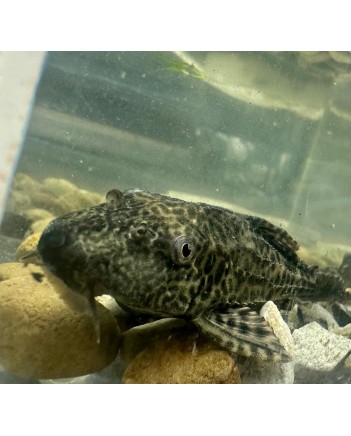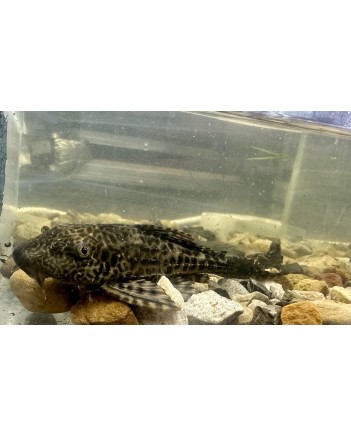Common Pleco
Scientific Name: Hypostomus plecostomus (often
misapplied)
Most commonly sold as: Pterygoplichthys pardalis or P.
gibbiceps
Common Names: Common Pleco, Suckermouth Catfish, Plecostomus
Family: Loricariidae
Origin: South America (Amazon River Basin); now widespread due to
aquarium releases
Quick Overview
- Size:
Up to 18–24 inches (45–60 cm)
- Lifespan:
10–15 years (with proper care)
- Temperament:
Generally peaceful but territorial with other bottom-dwellers
- Tank
Level: Bottom
- Diet:
Omnivore – primarily herbivorous, but opportunistically feeds on proteins,
Algae wafers, spirulina, sinking pellets, Blanched zucchini, cucumber,
peas, spinach Bloodworms, shrimp pellets, insect larvae (especially as
they age)
Temperature & Ideal Living Conditions
Temperature Range:
- Tolerable:
72–86°F (22–30°C)
- Ideal:
75–82°F (24–28°C)
Water Parameters:
- pH:
6.5–7.5
- Hardness:
4–20 dGH (moderately soft to hard water)
- Water
Flow: Moderate to strong – prefers well-oxygenated, clean water
Tank Size:
- Juveniles:
Can start in 55 gallons
- Adults:
Require at least 100–150 gallons due to massive adult size
- Tank
Shape: Long tanks with large footprints are essential
Tank Setup
- Substrate:
Sand or smooth gravel
- Décor:
Driftwood (aids digestion), caves, rockwork, and plenty of shaded hiding
spots
- Filtration:
Heavy-duty filtration is critical due to their high waste
production
- Lighting:
Moderate to low (they are shy and nocturnal by nature)
Tank Mates
- Compatible
With: Large peaceful fish (silver dollars, severums, large tetras,
cichlids)
- Caution:
May become territorial or latch onto slow-swimming tankmates (e.g.,
angelfish, goldfish)
- Avoid:
Small or delicate fish that may be harassed or injured
Behaviour
- Nocturnal
and reclusive during the day
- Can
become territorial as they age
- Will
uproot plants and rearrange decor with their powerful movements
- Strong
suction mouth used for clinging to surfaces and grazing
Breeding
- Difficult
in home aquariums due to size and space requirements
- Breeds
in deep burrows or caves in riverbanks in the wild
- Not
commonly bred in community tanks; most sold in trade are farm-raised
Important Notes
- Growth:
Rapid growth; most outgrow beginner tanks in under a year
- Messy
Eaters: High bioload – needs strong filtration and frequent water
changes
- Not
for Small Tanks: sold as juveniles– adults reach 18"+


